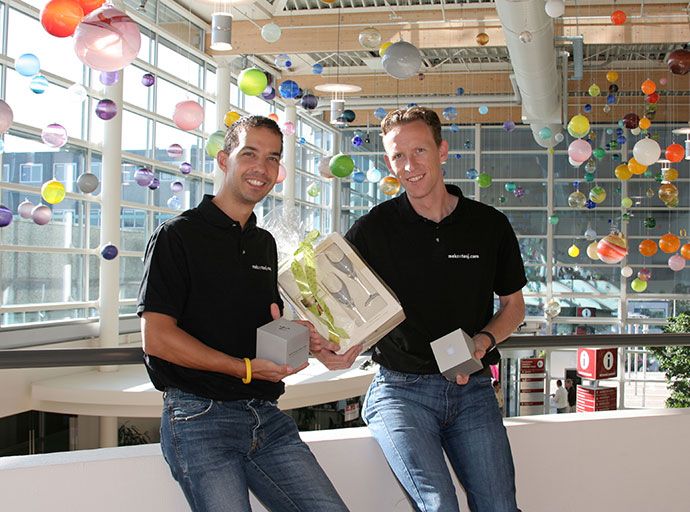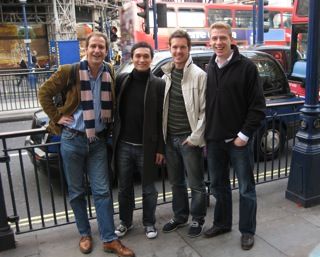The 2008 Nobel Prizes will be announced next week, starting with the Nobel Prize in Physiology or Medicine on Monday. There will be a live webcast on Monday at 9:30 AM GMT for those interested 1 . As every year just before the announcement, speculation about this year's winners is in full swing. M. William Lensch, here on Nature Network correctly predicted last year's winners 2 , and this year he is trying it again 3 .
Front Matter

Good software solves a problem. When one journal after another switched to PDF as electronic document format, and journals started to appear only in electronic form, storing papers as printouts in folders became impractical. But the PDF files will soon start to clutter the hard drive, despite efforts to organize them by topic, year or author. At least for Macintosh users, Papers is one practical and elegant solution to this problem.
This blog post is about presentations. And this usually means PowerPoint presentations, although some people do well without it1. Edward Tufte argues that PowerPoint can be a really bad tool to create slides2. But it is probably not the software, but rather the people that produce these slides that are responsible for the quality3. The Neurotic Physiology blog published a list of things you shouldn’t do during a Powerpoint presentation4.
The German Academic International Network (GAIN)1 informs German researchers working in North America about research opportunities in Germany. The implied intention is to lure German researchers back to Germany. GAIN project director Katja Simons explains: Many german researchers abroad are highly interested in returning but they need support creating networks and receiving information on career opportunities in Germany.
Conference 2.0 – A scheduled meeting of people sharing a common interest that takes advantage of Web 2.01 concepts. Scientific conferences are essential both for the exchange of ideas and for networking. But they don’t have to be organized the same way as 10-20 years ago. Web 2.0 tools now allow much broader user participation before, during and after the conference. Technology conferences have seen this change already2.

In the last few months we have seen an ever increasing number of new social networking (Web 2.0) sites for scientists. Good Web 2.0 tools for scientists primarily try to solve a problem. But by adding a social aspect, they will gain useful features that would otherwise not be possible.
The just finished conference Science Blogging 2008: London was a wonderful chance for real-life socialising networking. I started to upload some fotos to Flickr (e.g. Scott Keir explaining sign language, see all fotos tagged sciblog here), some of them are too embarrassing and I will keep them for bribes reference later on. The meeting was also a great opportunity to think about where we are today with scienceblogging.

Pictures missing
This blog entry is primarily intended for science educators that are interested in starting a blog for their teaching activities. Some of them will not be familiar with blogging and other web 2.0 tools. Not the typical audience of this blog, but I would greatly appreciate feedback, as I'm in the process of writing an article about this topic (in German).What is blogging and all this web 2.0 stuff?
Most scientific papers are now published in English, and I believe that this trend is good for international collaboration. Therefore I believe that blogs intended for scientists should also be written in English.
Like many other blogging platforms, Nature Network uses Textile to format blog entries. Textile is a markup language, and Andrew Sun has nicely put together the most important tags in this blog post. Unfortunately, Textile doesn't much help with formatting that is specific to science blogging. Specifically, there is no standard way to link to journal articles.